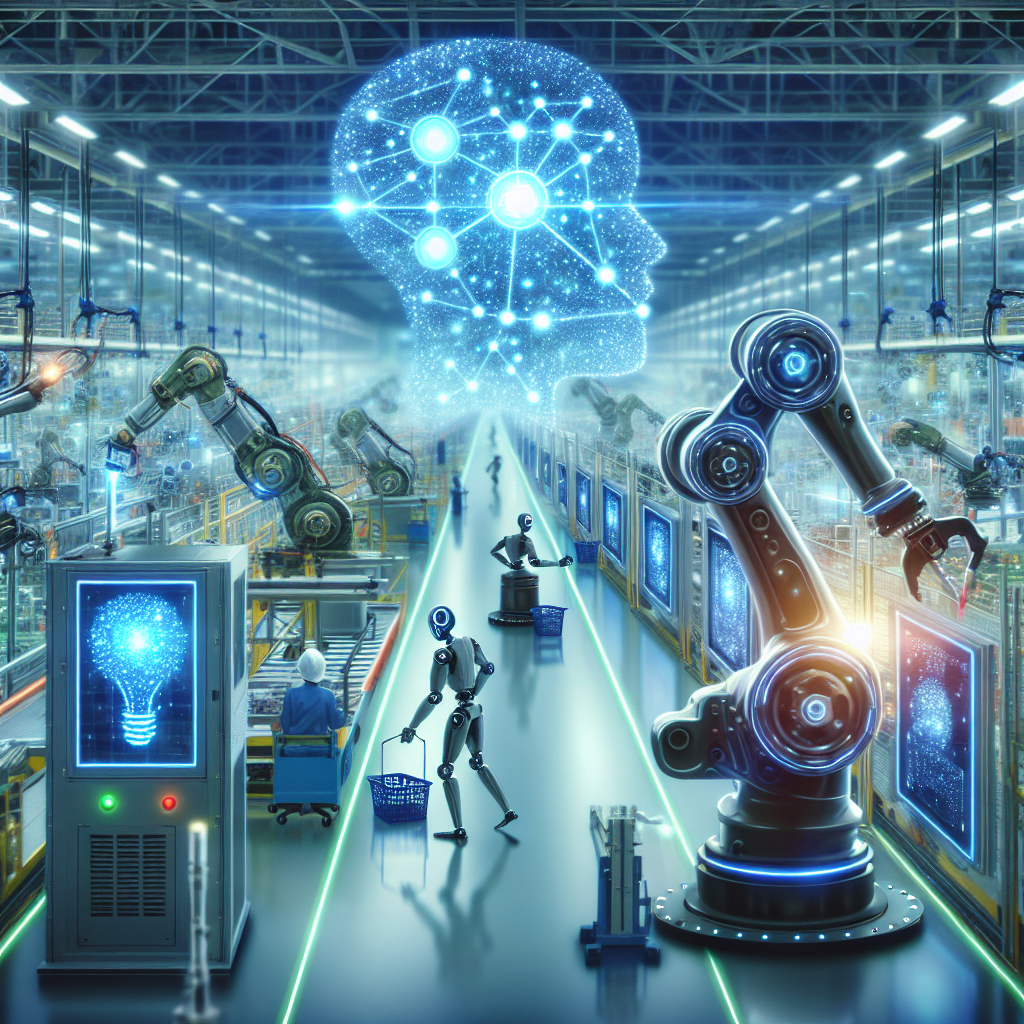In recent years, the manufacturing industry has seen significant advancements in technology, particularly in the use of artificial intelligence (AI) and collaborative robots. These technologies are revolutionizing the way products are manufactured, increasing efficiency, reducing costs, and improving safety in the workplace.
AI in manufacturing involves the use of algorithms that allow machines to learn from data and make decisions without human intervention. This allows for greater automation and predictive maintenance in manufacturing processes. Collaborative robots, also known as cobots, are robots designed to work alongside humans in a shared workspace. These robots are equipped with advanced sensors and software that allow them to safely interact with humans and perform tasks that are too dangerous or repetitive for humans to do.
The combination of AI and collaborative robots in manufacturing has the potential to transform the industry in several ways. Here are some of the key benefits of using these technologies:
1. Increased productivity: AI and cobots can work 24/7 without the need for breaks, resulting in increased productivity and faster production times.
2. Improved quality: AI can analyze data in real-time to identify defects or irregularities in the manufacturing process, leading to higher-quality products.
3. Cost savings: By automating repetitive tasks and reducing the risk of human error, manufacturers can save on labor costs and minimize waste.
4. Enhanced safety: Collaborative robots are designed to work alongside humans without the need for safety barriers, reducing the risk of accidents in the workplace.
5. Flexibility: AI and cobots can be easily reprogrammed to perform different tasks, allowing manufacturers to quickly adapt to changing production needs.
Overall, the integration of AI and collaborative robots in manufacturing is leading to a more efficient, cost-effective, and safer industry.
FAQs:
Q: What are some examples of how AI is being used in manufacturing?
A: AI is being used in manufacturing in various ways, such as predictive maintenance, quality control, supply chain optimization, and demand forecasting. For example, AI algorithms can analyze sensor data from machines to predict when maintenance is needed, reducing downtime and increasing efficiency.
Q: How are collaborative robots different from traditional industrial robots?
A: Collaborative robots are designed to work alongside humans in a shared workspace, while traditional industrial robots are typically isolated in cages for safety reasons. Cobots are equipped with advanced sensors and software that allow them to interact with humans and perform tasks that require dexterity and flexibility.
Q: What are some of the challenges of implementing AI and collaborative robots in manufacturing?
A: Some of the challenges of implementing AI and collaborative robots in manufacturing include the initial cost of investment, the need for specialized training for employees, and concerns about job displacement. However, with proper planning and integration, these technologies can lead to significant benefits for manufacturers.
Q: How can manufacturers get started with implementing AI and collaborative robots?
A: Manufacturers can start by conducting a thorough assessment of their current processes and identifying areas where AI and cobots can be integrated. It is also important to invest in training for employees and work closely with technology providers to ensure a successful implementation.
In conclusion, AI and collaborative robots are transforming the manufacturing industry by increasing productivity, improving quality, reducing costs, and enhancing safety. By embracing these technologies, manufacturers can stay competitive in a rapidly evolving market and meet the demands of the future.

